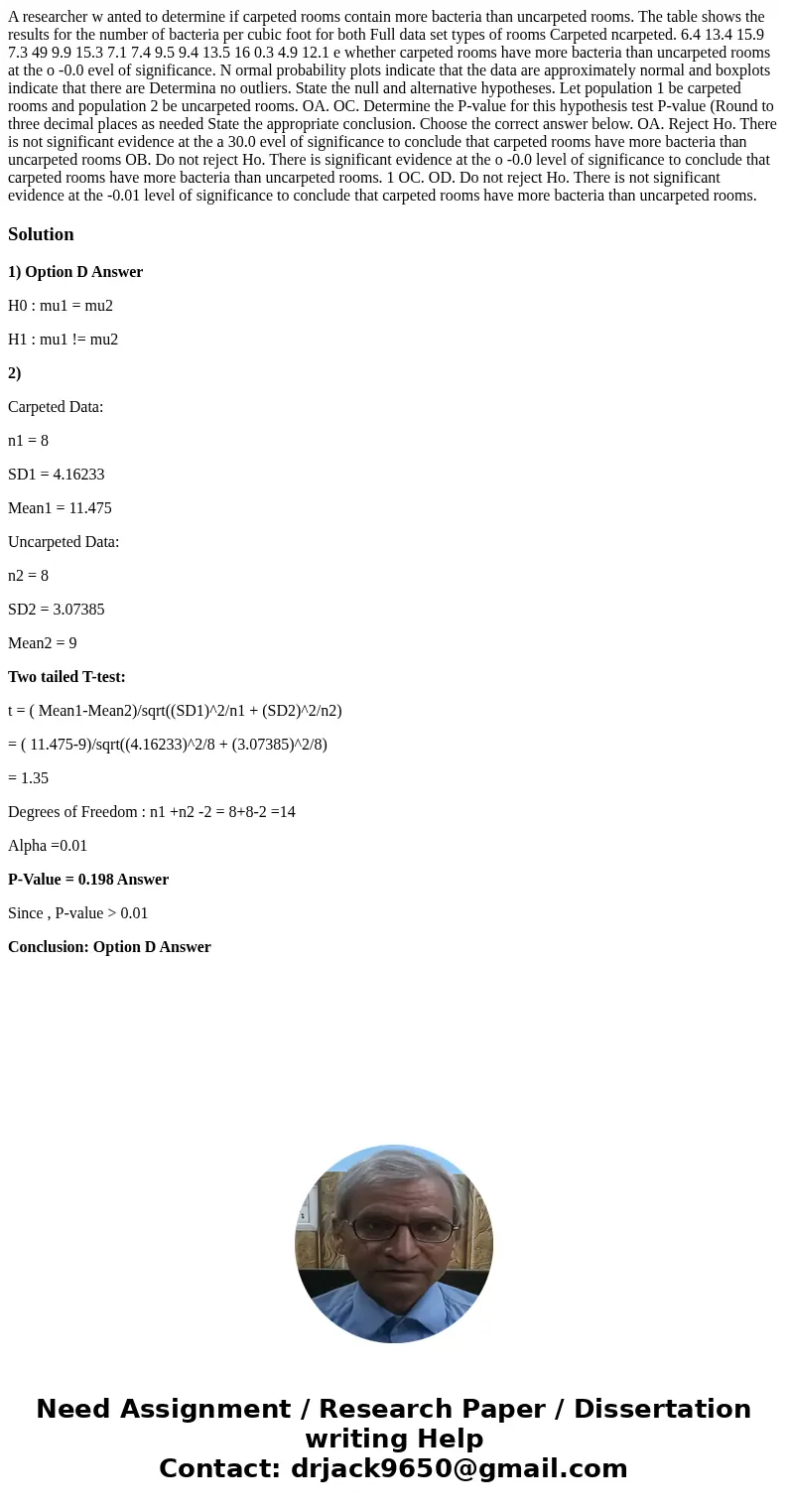A researcher w anted to determine if carpeted rooms contain
A researcher w anted to determine if carpeted rooms contain more bacteria than uncarpeted rooms. The table shows the results for the number of bacteria per cubic foot for both Full data set types of rooms Carpeted ncarpeted. 6.4 13.4 15.9 7.3 49 9.9 15.3 7.1 7.4 9.5 9.4 13.5 16 0.3 4.9 12.1 e whether carpeted rooms have more bacteria than uncarpeted rooms at the o -0.0 evel of significance. N ormal probability plots indicate that the data are approximately normal and boxplots indicate that there are Determina no outliers. State the null and alternative hypotheses. Let population 1 be carpeted rooms and population 2 be uncarpeted rooms. OA. OC. Determine the P-value for this hypothesis test P-value (Round to three decimal places as needed State the appropriate conclusion. Choose the correct answer below. OA. Reject Ho. There is not significant evidence at the a 30.0 evel of significance to conclude that carpeted rooms have more bacteria than uncarpeted rooms OB. Do not reject Ho. There is significant evidence at the o -0.0 level of significance to conclude that carpeted rooms have more bacteria than uncarpeted rooms. 1 OC. OD. Do not reject Ho. There is not significant evidence at the -0.01 level of significance to conclude that carpeted rooms have more bacteria than uncarpeted rooms. 
Solution
1) Option D Answer
H0 : mu1 = mu2
H1 : mu1 != mu2
2)
Carpeted Data:
n1 = 8
SD1 = 4.16233
Mean1 = 11.475
Uncarpeted Data:
n2 = 8
SD2 = 3.07385
Mean2 = 9
Two tailed T-test:
t = ( Mean1-Mean2)/sqrt((SD1)^2/n1 + (SD2)^2/n2)
= ( 11.475-9)/sqrt((4.16233)^2/8 + (3.07385)^2/8)
= 1.35
Degrees of Freedom : n1 +n2 -2 = 8+8-2 =14
Alpha =0.01
P-Value = 0.198 Answer
Since , P-value > 0.01
Conclusion: Option D Answer

 Homework Sourse
Homework Sourse